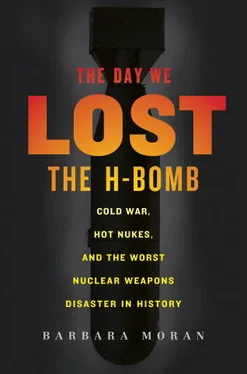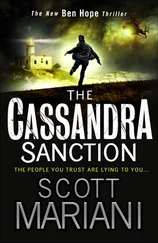By the time LeMay arrived in Guam, the AAF bombing campaign against Japan seemed a pretty dismal failure. The Navy, not the AAF, deserved the credit for gains in the Pacific, having crushed the Japanese fleet, mined the Japanese harbors, and captured valuable islands. The Navy brass, riding high, were even eyeing the powerful new B-29 bombers, plotting to steal them from the Army and incorporate them into the Navy. If LeMay didn’t get some results soon, Washington might scrap the strategic bombing campaign altogether. Failure in Japan would seriously jeopardize the case for an independent Air Force.
Luckily, LeMay had a new weapon at his disposal, one that would alter the fate of strategic bombing in Japan: napalm, a jellied gasoline that stuck to almost anything and burned slow and steady. In a city like Tokyo, where about 98 percent of the buildings were made of wood, incendiary bombs promised massive destruction. When his 325 planes left Guam, Saipan, and Tinian on March 9, most carried six to eight tons of napalm “bomblets,” designed to scatter when dropped and ignite buildings at a number of points.
LeMay put a trusted brigadier general named Thomas Power in charge of the raid. Power was to lead the planes to Tokyo, drop his bombs, and then circle at 10,000 feet to observe the rest of the operation. At around 2:30 a.m., Power, circling Tokyo, sent his first message to LeMay: “Bombing the primary target visually. Large fires observed, flak moderate. Fighter opposition nil.” Soon, messages arrived from other bombers reporting “conflagration.” The raid devastated Tokyo. The flaming napalm stuck to the flimsy wooden houses, starting small fires that quickly spread into giant firestorms. The flames burned so brightly that the bomber pilots could read their watch dials by the glow. The blaze burned nearly seventeen square miles of the city to cinders, destroying 18 percent of its industry. Somewhere between 80,000 and 100,000 people died, burned to death when their hair, clothes, and houses caught fire or suffocated when the firestorm sucked away oxygen. The smell of burning flesh hung in the air for days.
The carnage sparked little sympathy in America. “When you kill 100,000 people, civilians, you cross some sort of moral divide,” said the historian Edward Drea. “Yet at the time, it was generally accepted that this was fair treatment, that the Japanese deserved this, that they had brought this on themselves.” If LeMay had any moral qualms about the slaughter, he never acknowledged them. For him, it was an obvious trade: Japanese lives for American. “No matter how you slice it, you’re going to kill an awful lot of civilians. Thousands and thousands. But if you don’t destroy the Japanese industry, we’re going to have to invade Japan,” he wrote in his autobiography, Mission with LeMay .
“We’re at war with Japan. We were attacked by Japan. Do you want to kill Japanese, or would you rather have Americans killed?”
When the B-29s returned from Tokyo on the morning of March 10, LeMay ordered them to get back into the air that evening and bomb Nagoya, Japan’s second largest city. But after a look at the exhausted crews, he postponed the Nagoya raid for twenty-four hours. Over ten days, LeMay’s B29s firebombed aircraft plants in Nagoya, steel mills in Osaka, and the port of Kobe, destroying thirty-three square miles of those cities. He bombed Japan until he ran out of bombs and started again when the Navy brought him more. Throughout April, May, and June 1945, LeMay’s bombers pounded the cities of Japan. By summer, LeMay announced that strategic bombing could probably force Japan’s surrender by October.
The end came even sooner. On August 7, 1945, U.S. forces dropped an atomic bomb named “Little Boy” on the city of Hiroshima. Nine days later, they dropped a second, “Fat Man,” on Nagasaki.
That evening, Japan surrendered. The war was over.
The Japanese surrender confirmed one of LeMay’s long-standing beliefs: the value of massive, overwhelming force. In his eyes, the widespread bombing had shortened the war and saved lives. “I think it’s more immoral to use less force than necessary than it is to use more,” he wrote. “If you use less force, you kill off more of humanity in the long run, because you are merely protracting the struggle.” It was far more humane, he argued, to cut off a dog’s tail with one quick flick of the knife than to saw it off one inch at a time.
On September 2, LeMay attended the Japanese surrender ceremonies on board the USS Missouri in Tokyo Bay. As he stood on the ship’s crowded deck, thinking of the Americans who had died and “where I’d gone wrong in losing as many as we did,” a roar filled the air. Four hundred sixty-two B29s flew overhead in a massive, deafening salute. To LeMay, the atomic bombs had been impressive but anticlimactic. In his opinion, those B-29s had won the war.
In the months after VJ Day, LeMay and his fellow air generals toured the United States, drumming up support for an independent Air Force. Despite his initial ambivalence, LeMay soon realized that the atomic bomb was a major boon for his cause. In LeMay’s biggest raid over Japan, hundreds of planes had dropped thousands of bombs, adding up to the power of about 3,000 tons of T.N.T. A single atomic bomb, dropped onto Hiroshima by a single plane, exploded with five times that power — the equivalent of 15,000 tons of T.N.T. One bomb could now destroy a city. Whoever controlled this new weapon owned the future of war.
The Army Air Forces had a head start. The early atomic bombs were far too big and heavy (the bomb dropped on Nagasaki weighed 10,000 pounds) to be launched by a soldier, tank, or battleship.
Only a few, specially modified B-29s could actually drop one of these behemoths on a target. Some airpower advocates gleefully claimed that the atomic bomb had made the Army and Navy obsolete.
The famed pilot Jimmy Doolittle said that the Navy’s only purpose now was ferrying supplies, the Army’s only job to occupy a country after bombers had crushed it into submission. LeMay wasn’t quite so harsh but argued that this new atomic age required a strong, vigilant Air Force to protect America. “Being peace-loving and weak didn’t stop us from getting into a fight,” he told the Wings Club in October 1945. “Maybe being strong and ready will do it.” Congress, the president, and even the Army agreed that World War II and the atomic bomb had enhanced the status of airpower. With the Army’s blessing, the AAF broke free. In September 1947, the U.S. Air Force became an independent service.
The Air Force started life with three distinct commands. The Tactical Air Command (TAC) handled fighter planes and tactical support, the Air Defense Command (ADC) defended America against air attack, and the Strategic Air Command (SAC) took care of the bombers and atomic weapons. Most of the new Air Force generals believed that strategic bombing had won them independence, and they saw SAC as the key to the Air Force’s future. In the postwar scramble for planes, bases, and personnel, SAC grabbed the lion’s share.
Not that there was much to grab. After the war ended, President Harry Truman rapidly demobilized the military, reducing defense spending from 40 percent of the gross national product in 1944 to a mere 4 percent by 1948. He slashed Air Force personnel from a high of 2.4 million to only 300,000 by May 1947. He sent soldiers home to their regular jobs and ordered planes and jeeps sold for scrap. Records were dumped into boxes and thrown away. “We just walked away and left everything,” said Leon Johnson, a bomber pilot who became an influential Air Force general. “We started from nothing, from nothing, to rebuild the Air Force.” For several years after the war, SAC floundered under limited budgets and weak leadership. But by 1948, there was a sense of urgency; the uneasy postwar alliance between the Soviet Union and the United States was rapidly crumbling. The two countries had never shared an easy friendship, even while allies in World War II, but now the relationship was worsening by the day. The Communists were gobbling up territory in Eastern Europe, and their hunger for more seemed insatiable. Then, in 1948, the tension reached a new height, focused on the German city of Berlin.
Читать дальше











